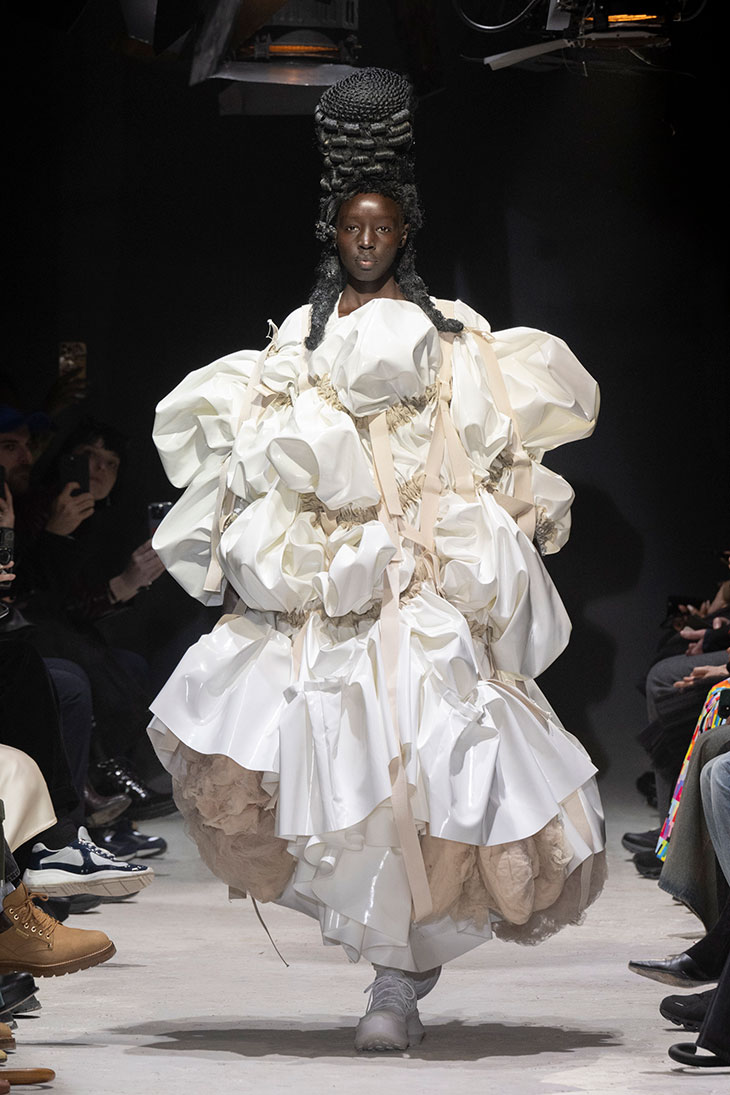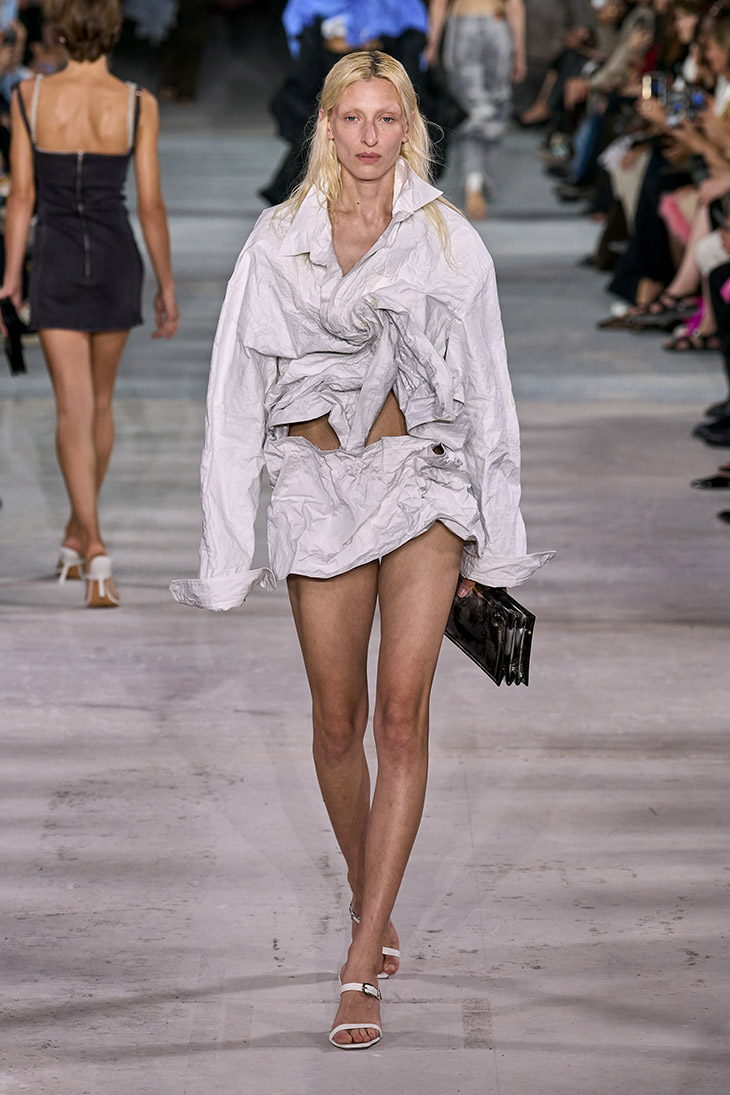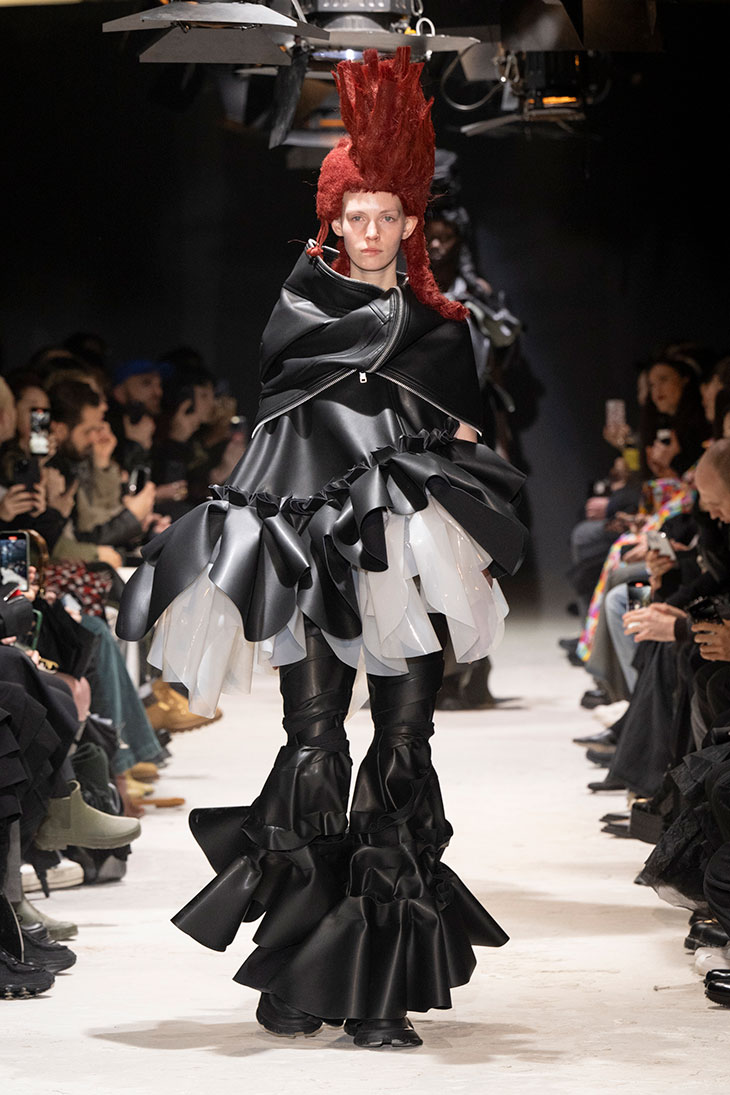Fashion
The Rise of Deconstruction Fashion

Deconstruction fashion is trending in 2024, captivating fashion fans with its raw, unfinished aesthetic. This style, characterized by exposed seams, asymmetrical designs, and distressed textiles, has taken center stage, challenging traditional notions of garment construction. Fashion lovers are drawn to its rebellious nature and the unique visual impact it creates.
Originating in the 1980s, deconstruction fashion has evolved into a significant force in the fashion industry. This article explores the history, key characteristics, and prominent brands that have embraced and shaped deconstruction fashion.
History
What is Deconstruction Fashion?
Deconstruction fashion is a design philosophy that emphasizes the structural elements of clothing, often highlighting imperfections and unfinished details. Deconstructed apparel emerged from the broader intellectual movement of deconstructionism, which originated in philosophy with French thinker Jacques Derrida. This movement influenced various fields, including art and architecture, before making its mark on fashion. Deconstruction fashion breaks away from traditional garment construction, embracing unconventional techniques and avant-garde approaches.
The 1980s Origins
The roots of deconstruction fashion can be traced back to the late 1980s and early 1990s. During this period, designers began experimenting with new ways of constructing garments, focusing on the inherent beauty of raw and unrefined elements. This was a response to the polished and opulent fashion trends of the 1980s. Designers like Martin Margiela, Yohji Yamamoto, and Rei Kawakubo pioneered this movement, challenging conventional fashion norms and introducing a new, intellectual approach to clothing design.

Key Characteristics
Deconstruction fashion is marked by several distinct characteristics. Asymmetrical designs are prevalent, often featuring uneven shapes and irregular elements. This creates a sense of unpredictability and uniqueness. Another hallmark is the unfinished appearance of garments, with visible seams and raw edges. This intentional roughness challenges the notion of perfection in fashion and celebrates the beauty of imperfection.
Distressed textiles are also a common feature, adding a sense of history and individuality to each piece. Designers often experiment with unconventional materials, including recycled fabrics and unexpected textures. The reshaping of garment silhouettes is another key aspect, with oversized pieces and unconventional volume arrangements creating a unique visual impact. Philosophically, deconstruction fashion draws from deconstructionism, rejecting fixed meanings and embracing fluid, evolving interpretations of clothing.
Notable Brands
Several brands have become synonymous with deconstruction fashion, each bringing unique interpretations and innovations to the movement.

Maison Margiela
Maison Margiela, founded by Belgian designer Martin Margiela in 1988, is closely associated with deconstruction fashion. Margiela’s designs are known for their avant-garde aesthetics, featuring unconventional materials, oversized silhouettes, upcycled vintage items, and visible seams with raw edges. His deconstruction technique involves carefully cutting and reassembling parts of old garments, creating unexpected and innovative pieces. Margiela’s first show in 1989, held on a derelict playground, shocked the industry with its raw and deconstructed designs. His approach paved the way for a new democratic fashion that valued recycled materials and sartorial freedom. Margiela’s influence on deconstruction fashion is profound, with his innovative techniques and avant-garde aesthetics inspiring countless designers.
Margiela’s impact on fashion extends beyond his innovative designs. He maintained a notorious privacy, refusing interviews and photographs, letting his creations speak for themselves. This enigmatic persona only added to the allure of his brand. Margiela’s legacy continues under the creative direction of John Galliano, who has kept the spirit of deconstruction alive while infusing it with his own theatrical flair.

Y-Project
Y-Project, under the creative direction of Glenn Martens, has become a hallmark of deconstruction and innovation. Martens’ designs are known for their creativity, attention to detail, and incorporation of deconstruction elements. Y-Project’s collections often feature gender-bending, free-spirited designs that challenge conventional fashion norms.
Martens’ approach to fashion draws inspiration from the streets of Paris, embodying a youthful and rebellious spirit. By toying with familiar pieces and warping certain aspects, Y-Project creates unique and unconventional garments that push the boundaries of traditional fashion. This innovative approach has earned the brand recognition and several prestigious fashion awards.

Ottolinger
Ottolinger, founded in 2016 by Swiss designers Christa Bösch and Cosima Gadient, is renowned for its radical deconstruction and immaculate tailoring. Based in Berlin, the brand’s designs feature burned and slashed fabrics, exposed seams, and raw edges, creating a tension between destruction and transformation. Ottolinger’s collections are a bold statement against the status quo of luxury fashion, offering charged silhouettes and avant-garde aesthetics.
The brand’s unique approach to deconstruction has attracted widespread admiration, with each collection pushing towards a singular newness. Ottolinger’s designs are about creating a halo of confidence for the wearer, challenging traditional notions of beauty and luxury.

Rick Owens
Rick Owens is a pioneering American designer whose work epitomizes deconstruction fashion. Owens’ designs are known for their architectural silhouettes, monochromatic palettes, and distressed textiles. His collections often feature asymmetrical designs, raw edges, and unconventional materials, creating a dark and futuristic aesthetic.
Owens’ influence on the fashion industry is immense. His avant-garde approach and commitment to pushing the boundaries of traditional fashion have earned him a cult-like following. Owens’ work continues to inspire new generations of designers, establishing his place as one of the most influential figures in deconstruction fashion.

Comme des Garçons
Comme des Garçons, founded by Rei Kawakubo in 1969, is a pioneering label in deconstruction fashion. Kawakubo’s designs challenge conventional beauty standards with their asymmetrical cuts, distressed fabrics, and unconventional silhouettes. Her collections often blur the lines between fashion and art, creating garments that defy categorization.
One of the most iconic collections, “Body Meets Dress, Dress Meets Body” (Spring/Summer 1997), redefined the female form with padded lumps and bumps, celebrating imperfections. Kawakubo’s collaborations with brands like Nike and H&M have brought her avant-garde aesthetic to a broader audience.
Finally, deconstruction fashion represents a significant shift in the fashion industry, challenging traditional notions of garment construction and aesthetics. With its roots in the intellectual movement of deconstructionism, this fashion philosophy emphasizes the beauty of imperfections and the fluidity of design. As deconstruction fashion continues to gain popularity in 2024, it serves as a reminder of fashion’s ever-evolving nature and its ability to challenge established norms.









